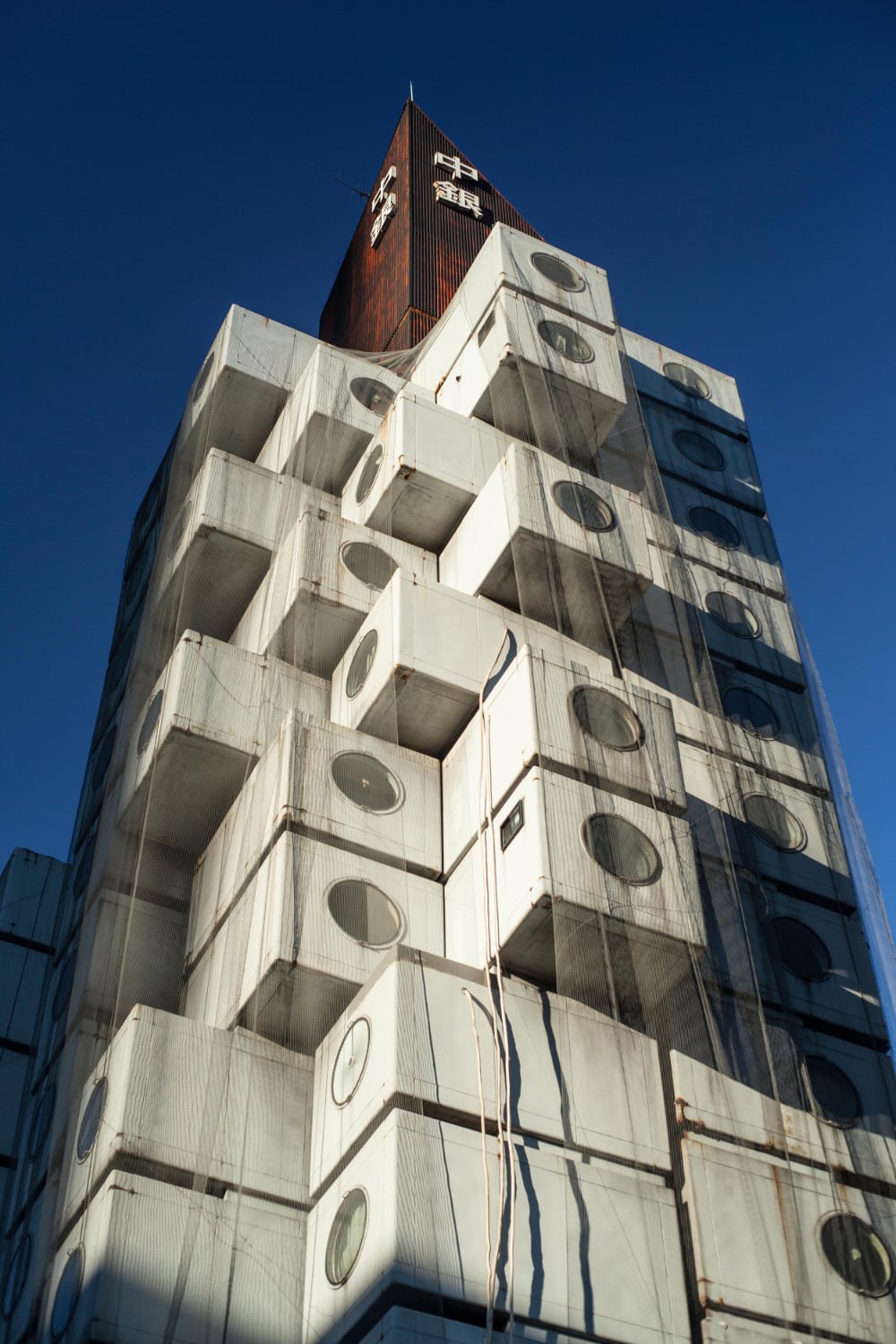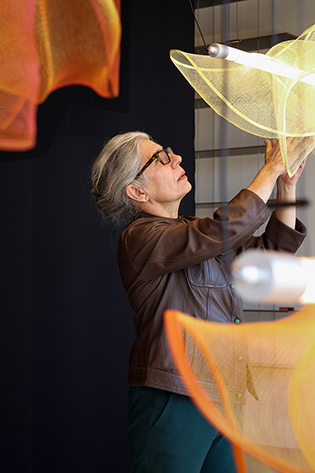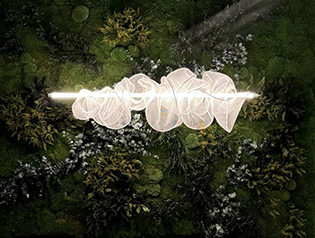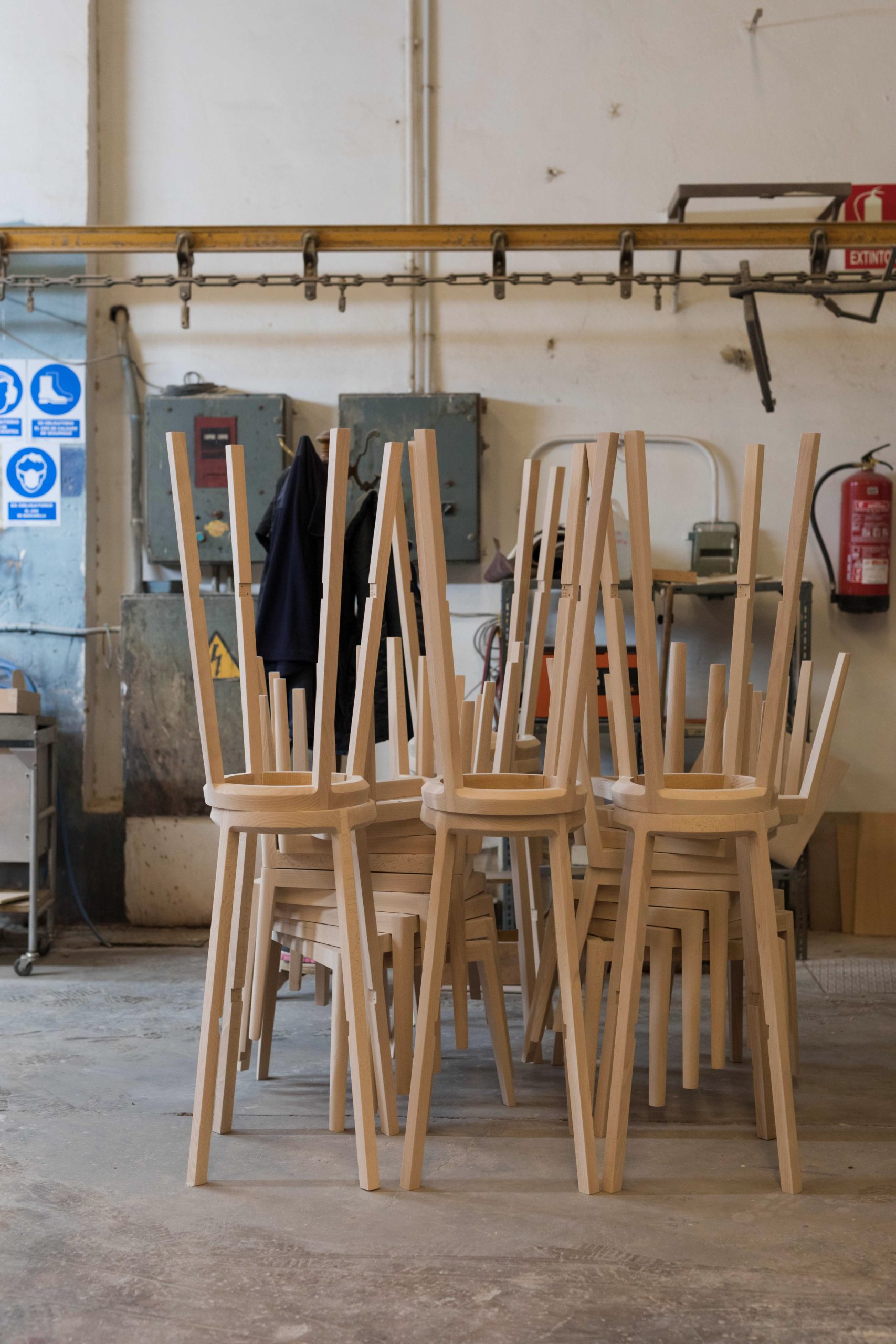Built in 1972, Nakagin Capsule Tower is an erstwhile symbol of Japan’s post-war focus on the future. Sited in Tokyo’s Ginza district, the building was designed by the late Kisho Kurokawa, a much celebrated Japanese architect. Kurokawa was perhaps best known as one of the founders of Metabolism, a modern Japanese architectural movement. The movement’s premise was based on the belief that buildings and cities are not static entities. Rather, they are living and evolving, like organic matter that is constantly renewing itself.
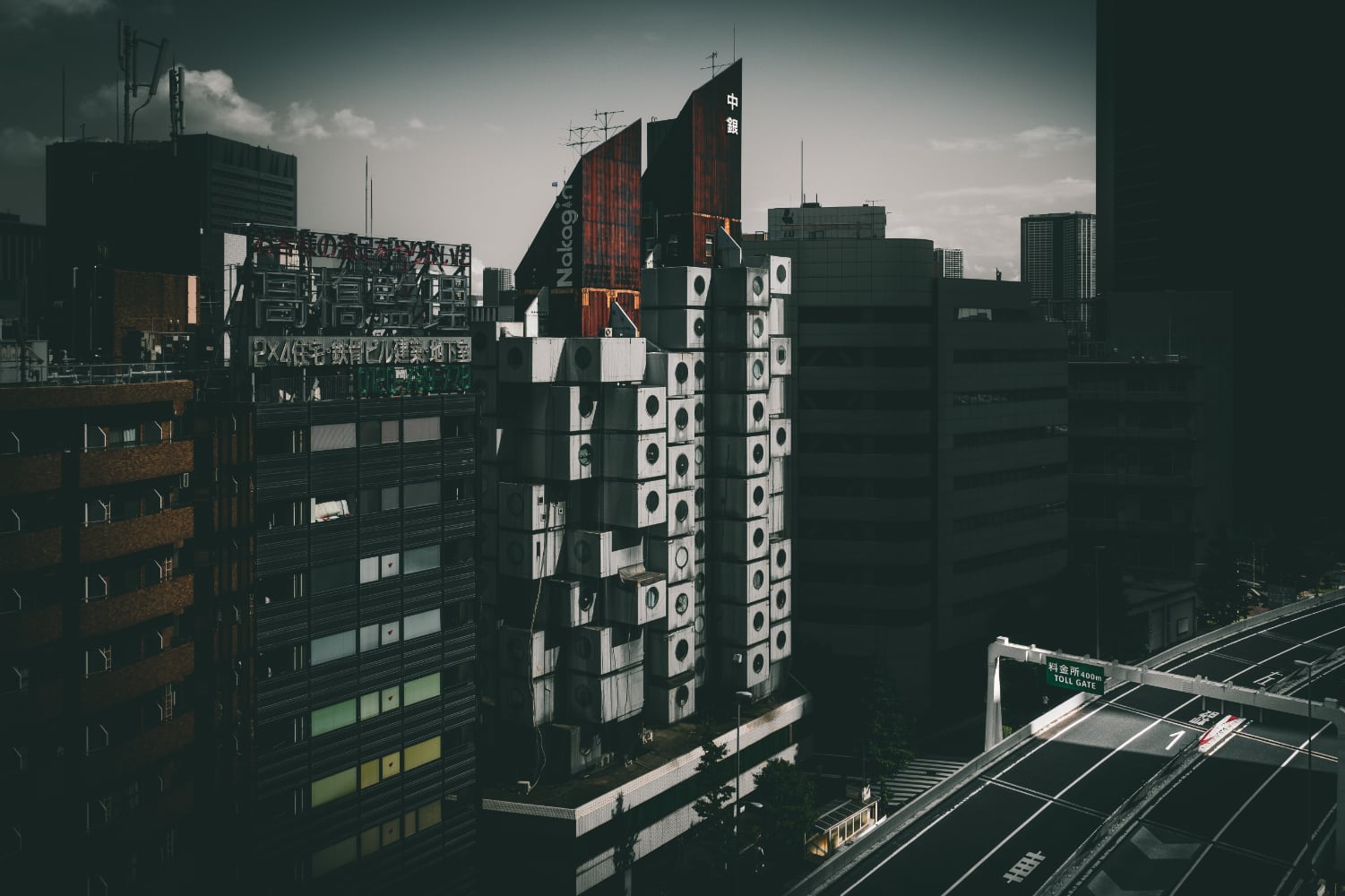
Nakagin Capsule Tower. Photo by Denys Nevozhai on Unsplash.
Kisho Kurokawa’s Nakagin Capsule Tower was the perfect example of Metabolism in architecture. Its structure was made up of 140 self-contained prefabricated capsules, stacked and rotated at various angles across two interconnected towers. With his considerable design prowess, Kurokawa developed a method for attaching each capsule to a concrete core using only four high-tension bolts—capsules were then easily changeable and replaceable (following the principles of Metabolism). The Nakagin Capsule Tower was built in just thirty days—it was Kurokawa’s intention that capsules would then be replaced every twenty-five years. Sadly, this ambition was never realised and the tower is now in a considerable state of disrepair.
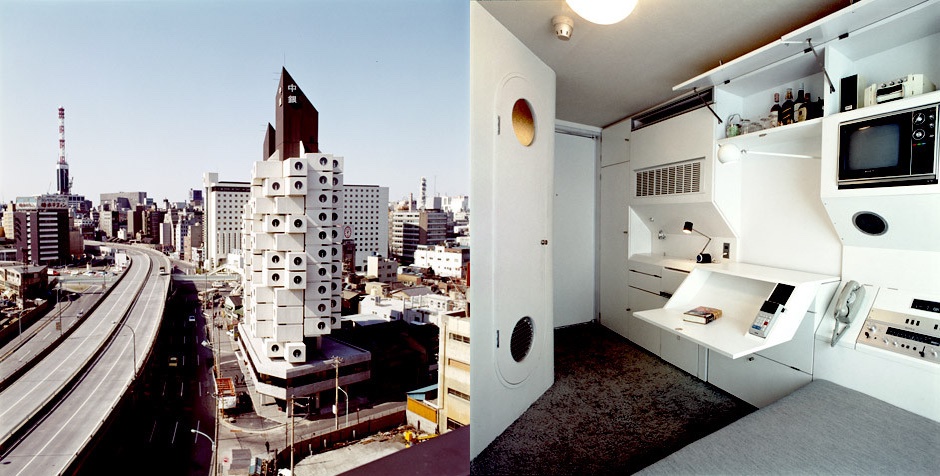
An original view of Nakagin Capsule Tower and an image of a capsule’s interior. Photos © Arcspace via ArchDaily.
Imagined as a collection of pieds-à-terre, the Nakagin Capsule Tower’s units offered sanctuary to busy professionals wishing to avoid long commutes to suburban homes. Capsules measured 4 x 2.5 metres and provided amenities that were, at that time, truly state of the art. Each pre-assembled unit had a large circular window and facilities included a built-in bed and bathroom, a kitchen stove and fridge, a Sony Trinitron TV, a reel-to-reel cassette/radio, and a rotary dial phone.

A Nakagin capsule on display at the Mori Art Museum in Tokyo in 2011. Photo by Dick Johnson, courtesy Wikimedia Commons.

A hallway and interior in Nakagin. Photos by Dick Johnson, courtesy Wikimedia Commons.
On the eve of its 50th birthday, Nakagin Capsule Tower faces an uncertain future: the tower will likely be demolished–disassembled in the spring of 2022. The decaying edifice is currently cloaked in netting to prevent any debris from falling on to passers-by. Nakagin’s few remaining residents are coming to terms with the fact that their beloved home will soon disappear. Despite efforts to preserve the tower, the logistical challenges, large amounts of asbestos, and a requirement to meet Japan’s strict earthquake-resistance regulations, have proved too costly. Instead, one Nakagin resident, Mr Tatsuyuki Maeda (who is also a representative of the Nakagin Capsule Tower Building Preservation and Regeneration Project), plans to dismantle the capsules, remove the asbestos, and donate them to cultural institutions in Japan and overseas. Maeda has already received enquiries from a number of European museums and believes that ‘Europeans understand the need to preserve buildings like this, whereas Japan is still guided by a pull-down-and-rebuild mentality.’
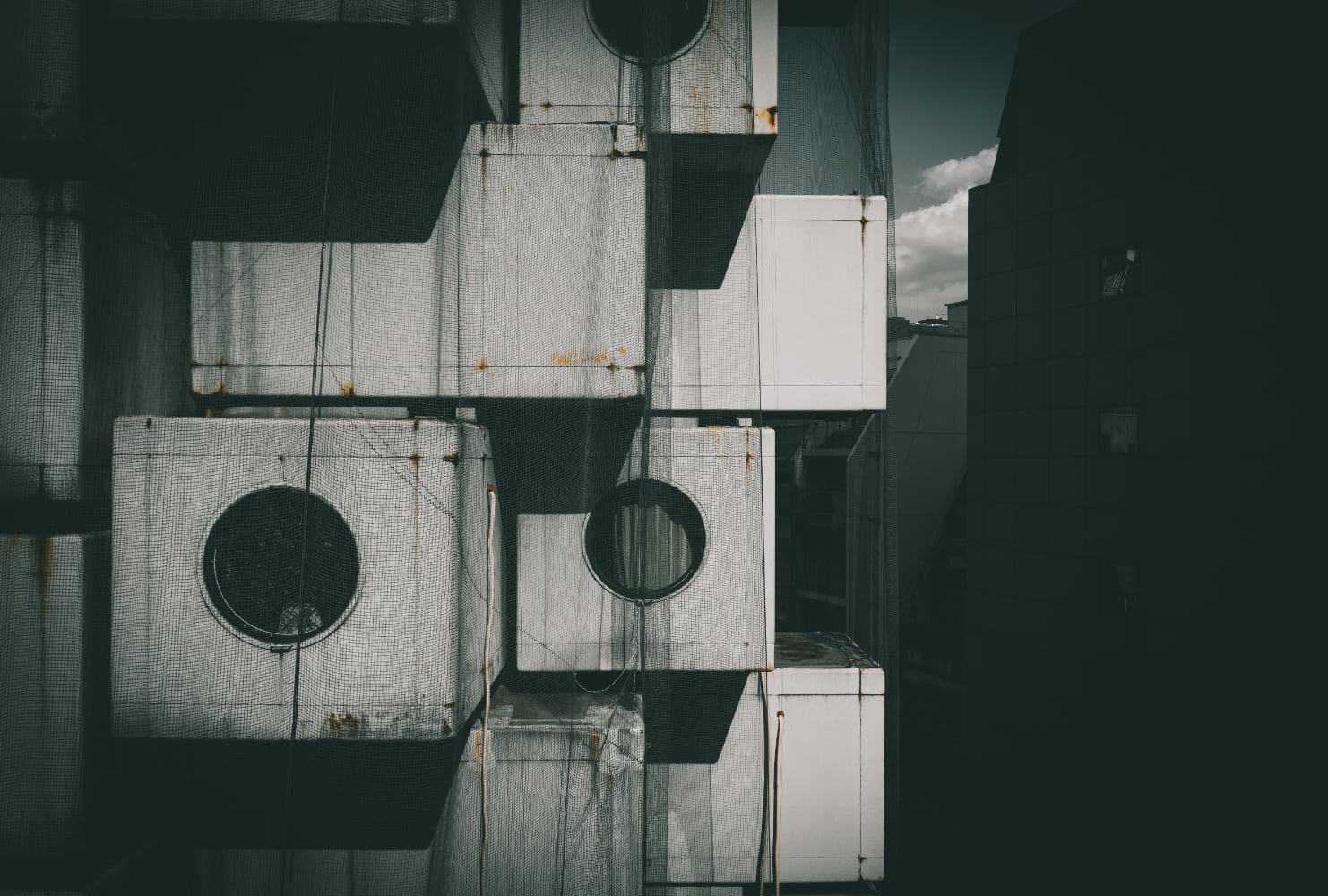
Nakagin Capsule Tower shrouded in netting. Photo by Denys Nevozhai on Unsplash.
Kisho Kurokawa’s plans for Nakagin Capsule Tower, though based on utopian ideals, were never fully realised. Despite this, throughout his career Kurokawa became an advocate for sustainable design, drawing on the principles of Metabolism. Later, he established the Kisho Kurokawa Green Institute at Anaheim University in California, offering programmes in sustainable management. Whatever its future, the Nakagin Capsule Tower will remain in the hearts and minds of architectural buffs around the world. With its sci-fi-like facade, Kurokawa created a building that captures the imagination, instilling a sense of wonderment, and evoking images of a futuristic urban landscape that might-have-been. Once it ceases to exist, a small corner of Ginza will never be the same.
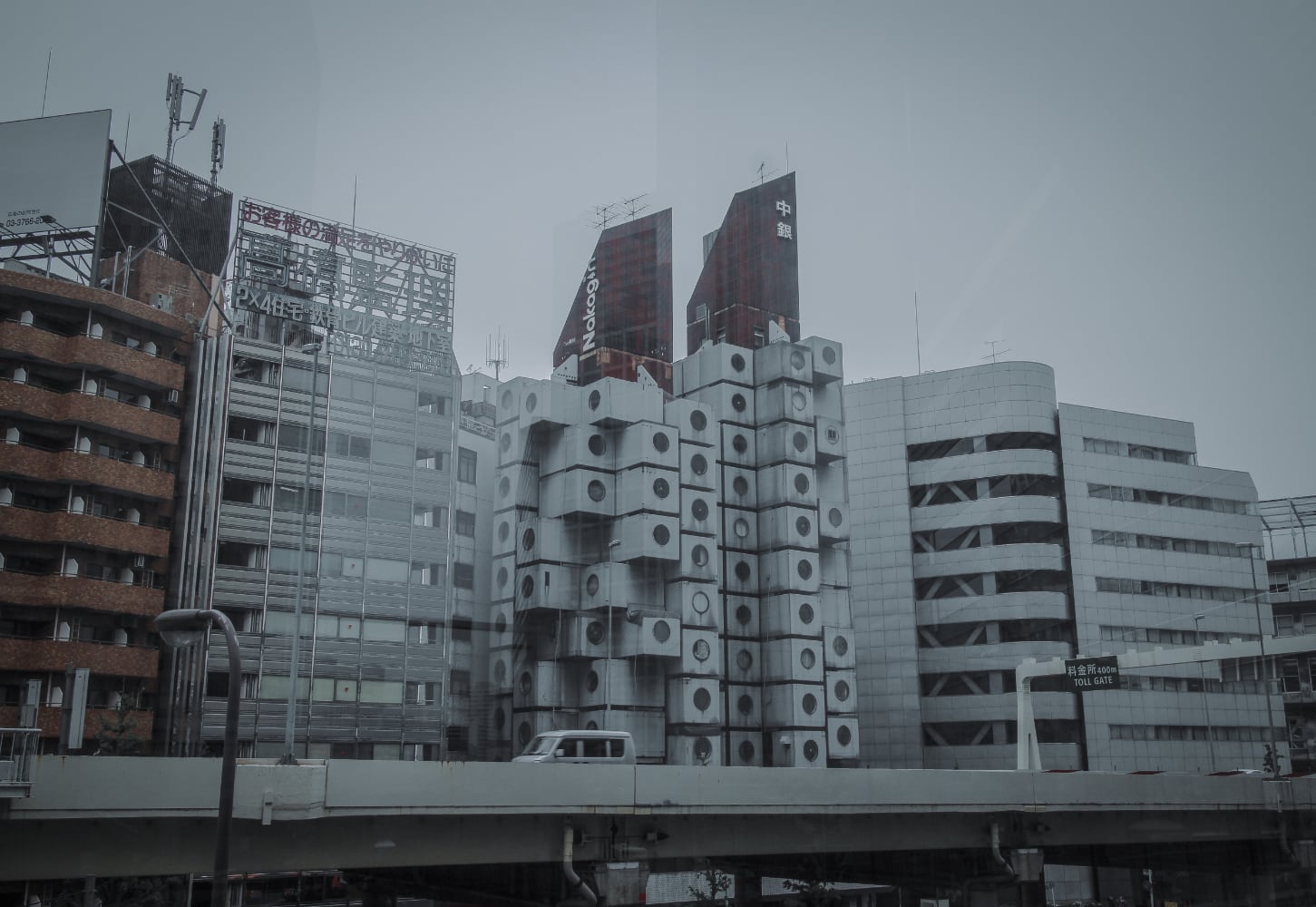
Photo by Sava Bobov on Unsplash.
Resources: ArchDaily, Dezeen, The Guardian.
Nakagin Capsule Tower is part of LZF’s ‘Building Brilliance’ series.

